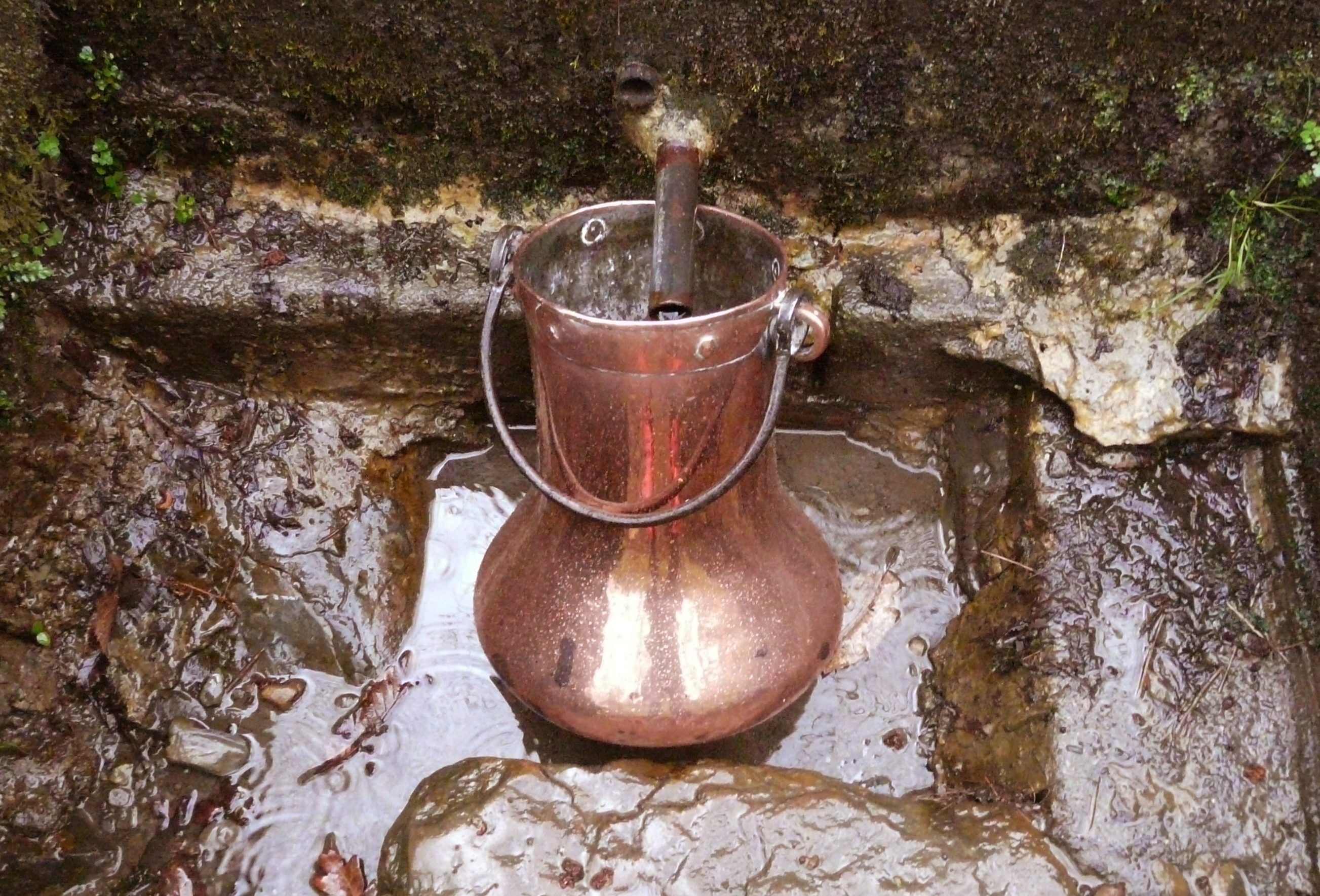Archives

Fountain of Goiendegi. Neighbourhood of Urigoiti, Orozko (Bizkaia). Javier Perea. Labayru Fundazioa Photographic Archive.
“It has quite rightly been said that any human settlement is the amalgamation of a little humanity, a little land and a little water.” proves to be a self-evident, though worth recalling observation, made by Barandiaran at the time.
Proximity to rivers or springs of fresh water was a major geographic factor for human settlement, ultimately affecting the location of rural houses. Some households had their own well, cistern or tank; others shared it with neighbouring households. Many neighbourhoods featured a fountain, together with a drinking trough for the livestock, and a communal washing place where clothes were laundered. And in larger population areas urban fountains were a convenient source of good-quality water, not to mention professional vendors who supplied water door to door. (more…)

Copper errada belonging to the Olabarria family from Udiaga. Orozko (Bizkaia), 2018. Itziar Rotaetxe. Labayru Fundazioa Photographic Archive.
According to the accurate definition provided by the Royal Spanish Academy, the herrada is ‘a wooden bucket with large cast iron or brass bands, wider at the base than at the top rim’, more of a museum piece than a useful object today. Most notably throughout the 19th century and the first few decades of the 20th century, this particular bucket served an important function in Basque society, for it was used by women to fetch water from the source. In western Basque dialects it is known as errada, perrada, edarra, and others, ferreta being the commonest word for it in eastern varieties. (more…)


